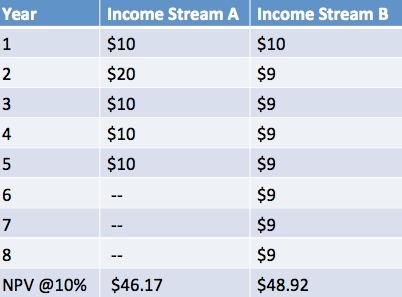Why We Don’t Trust Companies Part IV: The Solution
 My last three posts – here, and here, and here – were about why we don’t trust companies. To review the bidding, I’ve said it’s because:
My last three posts – here, and here, and here – were about why we don’t trust companies. To review the bidding, I’ve said it’s because:
- Trust is predominantly personal in nature – a fact most companies don’t recognize
- Corporate missions, motives and mindsets are all tainted by zero-sum, competitive ideologies
- Trust requires risk, while companies abhor risk.
Stripped down – companies see trust as impersonal, ideologically suspect, and too risky.
Now, if I am right about that, then we would want to see solutions in the business world that recognize the personal nature of trust, incorporate trust-enhancing ideologies, and embrace risk-taking to enhance trust.
Surprise surprise – that’s not what we see.
The dialogue about corporate trust is consistently mis-framed. It is not companies that trust, or are trusted. It is the people in the companies who trust, or are trusted. The challenge is not to make companies trust or be trustworthy – it is to create corporate environments in which people can trust and be trusted.
In the trust game, the company is an agent, an enabler – not a primary actor.
The Usual Recommendations to Increase Corporate Trust
I spend a lot of time reading reports on how trust in business can be improved. Here are a few examples;
- an Arthur Paige Society report on The Dynamics of Public Trust in Business;
- Gallup on Rebuilding Trust in Banks;
- a 2013 Edelman PR piece, Trust in Financial Services Still Ranks Low;
- a Wharton/State Street bank study called Bridging the Trust Divide.
Believe me, there are hundreds more.
These are all reasonably good pieces of work (there are certainly worse). But even from these top-drawer sources, the top-line recommendations are bloodless, abstract, and cold – because they’re focused at the corporate level. (Curiously, the right answers in all four of these cases are in fact contained in the reports – they’re just buried deep.)
Typical topline recommendations look like these (taken from the sources above):
- Increase adherence to ethical codes and standards
- Create a set of values that define and clarify what your enterprise and its people are at root, and work to ensure that these values are adhered to consistently across your enterprise.
- A well-defined, repeatable roadmap for the conversation…more transparency about fees and costs
- Communicate frequently and honestly on the state of the business.
Again – there’s nothing wrong in these recommendations. But taken alone, they are sleep-inducing; they sound like Charlie Brown’s teacher’s Mwah, Mwah, Mwah.
Where is the personal? The belief system? The risk-taking? Where’s the people?
The Right Answer for Increasing Corporate Trust
Again, not that there’s anything wrong with the suggestions above, but they don’t get to the heart of the matter. Here are some recommendations that do.
1. Trust is personal – so lead by example.
Role model it. Everyone, not just the top leaders. And to be sure what “it” is, identify hundreds of situations and the appropriate responses for each (not to memorize, but to ensure understanding). Talk about them – endlessly. Get coaching. Do brainstorming sessions. Talk about what you’re doing with employees, and with customers. Identify key vocabulary terms you’ll use, and use them. Publicly praise and private counsel appropriate personal examples of trust-based interactions.
The way to get a trust-based company is not to fix the company – it’s to fix the people and the environment they live in so that the people can trust and be trusted in all their affairs.
2. Articulate and preach the trust ideology.
Reject zero-sum thinking. Think long-term relationships, not short-term transactions. Make transparency a default state in all conversations (except where illegal or harmful). Emphasize win-win solutions with customers, employees, and other stakeholders. Believe that trust relationships are more profitable over the medium and long-term, that they are complementary not opposed to corporate success.
3. Teach Social Risk-taking
People can’t learn to trust if they have no degrees of freedom to do so. People are more likely to be trustworthy if they are trusted. Human relationships are formed by the constant reciprocal taking of small risks; the result is long term risk mitigation.
There are personal relationship skills that drive trust. They can be taught, and the teaching of them gets to the heart of a trust-enhancing organization.
—————
The route to a high-trust organization is through its people. That route starts not with corporate policies per se, but with human interactions.

 This is the third in a four-part series about why we don’t trust companies. The final post will offer solutions.
This is the third in a four-part series about why we don’t trust companies. The final post will offer solutions. Every age has its fads and fashions. Some of them hold up over time – competitive strategy, business process re-engineering, quality circles. Applying neuroscience to business, I suggest, will not be one of them.
Every age has its fads and fashions. Some of them hold up over time – competitive strategy, business process re-engineering, quality circles. Applying neuroscience to business, I suggest, will not be one of them. The NYTimes recently published
The NYTimes recently published 
 Please welcome guest-blogger Sonja Jefferson to Trust Matters today. She’s founder of
Please welcome guest-blogger Sonja Jefferson to Trust Matters today. She’s founder of 
 I always have trouble answering a question I’m often asked: What company does a great job on trust? Because the answer is some combination of, “it depends on the definition of trust,” and “hardly any.” Let me unpack that.
I always have trouble answering a question I’m often asked: What company does a great job on trust? Because the answer is some combination of, “it depends on the definition of trust,” and “hardly any.” Let me unpack that.